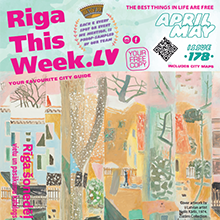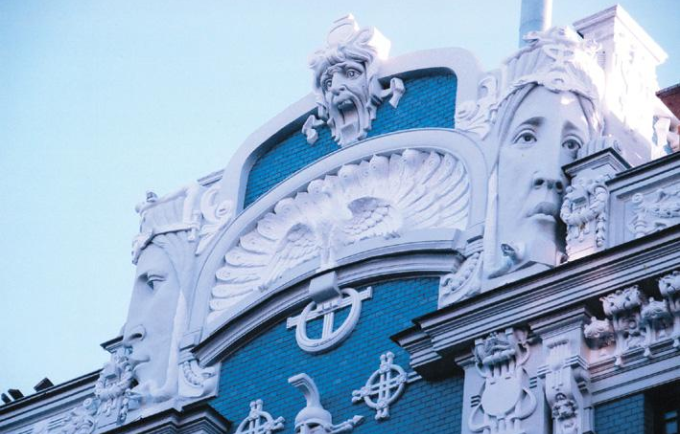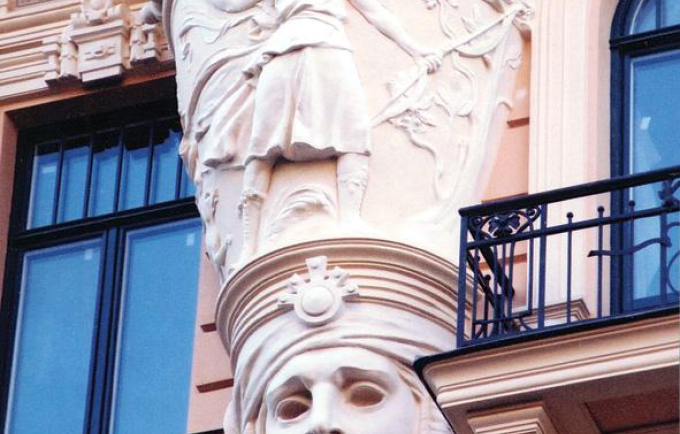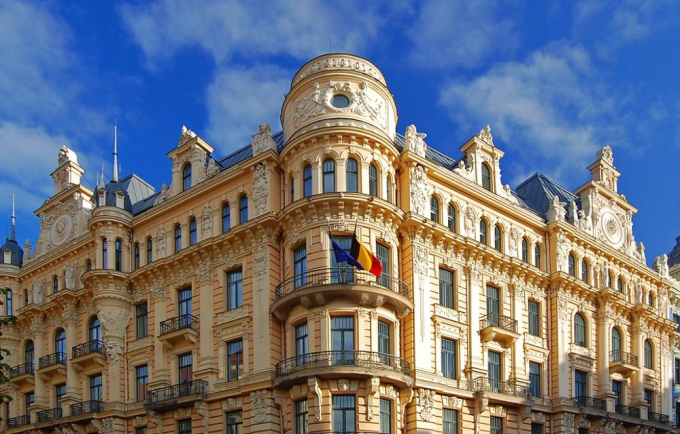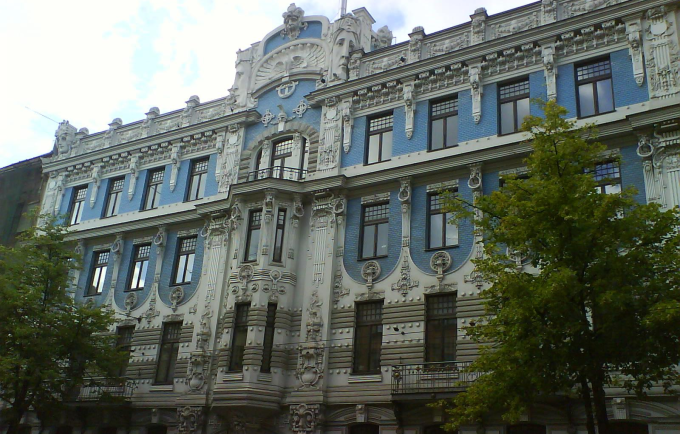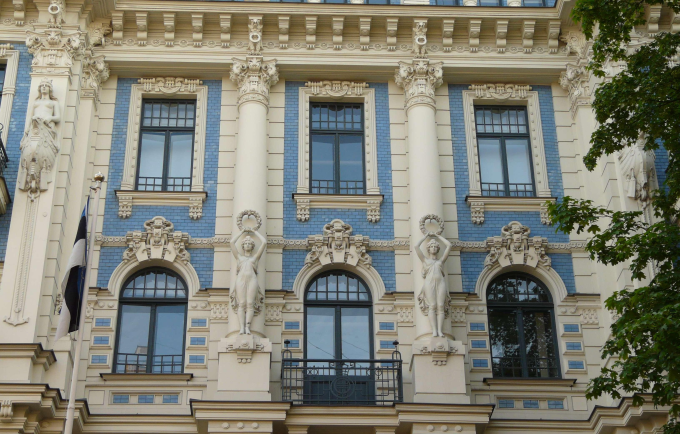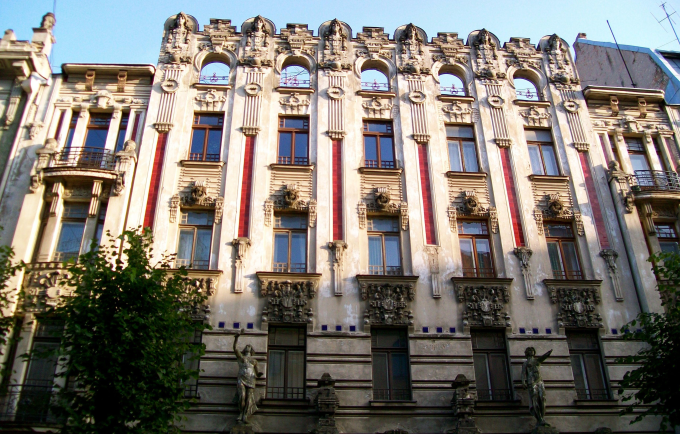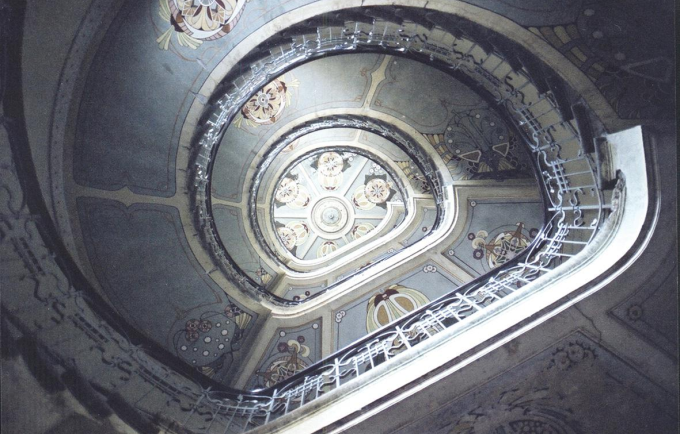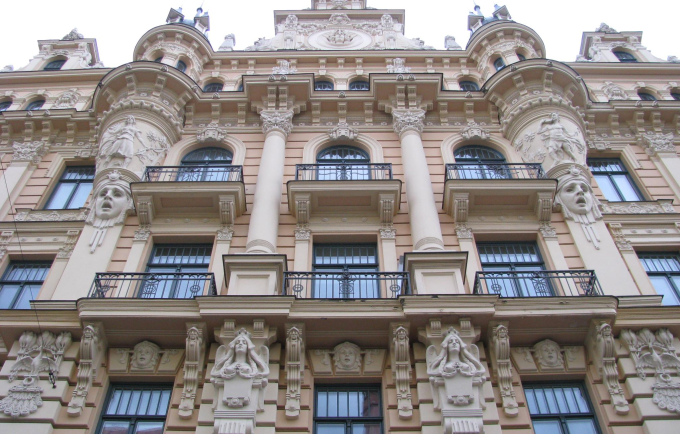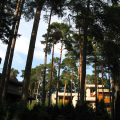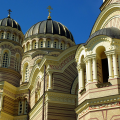Eclectically Decorative Art Nouvea
The exaggeration of decorative ornamentation on facades irrespective of the building’s dimensional shape is a typical characteristic of Art Nouveau. There are some buildings whose basic architectonical composition - regular rhythms with a saturation of surface decorations - does not differ from 20th century Eclecticism. New to the era are only ornamental motifs - tensely articulated lines, geometric figures or stylized ornaments depicting plants, and masks, and extended proportions etc. This Eclectically Decorative trend appeared in the early stages of Art Nouveau development, and there are not many examples of this in Riga. The most characteristic examples are buildings on and near Alberta Street designed by M. Eizenšteins, and several buildings designed by H. Šēls, F. Šefels, R. Cirkvics. J. Alksnis and other architects.
Perpendicular Art Nouveau
This is one of the most characteristic formal trends of Riga Art Nouveau architecture. It spread after 1906 when romantic stylized motifs slowly disappeared from building facades. A building’s artistic image is shaped by the emphasis of vertical elements in the fa?ade. This includes strongly articulated bay windows and reliefs, and outwardly projecting strips that extend upward for several floors. Ornamental decorations are introduced in the spaces between floors and are completely integrated into the basic architectural forms of the fasade, simultaneously emphasizing the verticality of composition. More than a third of Riga’s richly varied legacy of Art Nouveau buildings exhibit the Perpendicular Art Nouveau style. In some locations these buildings totally dominate and define their surrounding urban environment (Brivibas Street, Ģertrudes Street, Aleksandra Čaka Street etc.). Most often it is represented by the works of such architects as J. Alksnis, E. Laube, B. Bīlenšteins, O. Bārs, P. Mandelštams etc.
National Romanticism
This reflects an attempt by Riga architects to develop a distinctive Latvian style in architecture. This Art Nouveau trend prospered between 1905 and 1911. Traditional wood buildings and the decorative arts served as the main source of inspiration. Latvian architects especially valued the use of natural, indigenous building materials. Characteristic of National Romanticist buildings is a certain heaviness of forms, monumental nobility, steep roofs, window aisles with angled tops, and ornamentations with elegant ethnographic motifs that are used quite cautiously and sometimes transformed into the plastic, rounded patterns characteristic of the Art Nouveau aesthetic. Almost every 3rd or 4th Art Nouveau building in Riga can be more or less included in the National Romanticism category. The artistic compositions often make use of construction elements (metallic lintels, beam supports etc.) The greatest masters in this form were: E. Laube, K. Pēkšēns, A. Vanags, A. Malvess. National Romanticism can also be observed in the works of Baltic German architects.
Art Nouveau architecture can primarily be found in Riga, and only rare examples are seen elsewhere in Latvia.
© Text: Prof. Jānis Krastiņš


